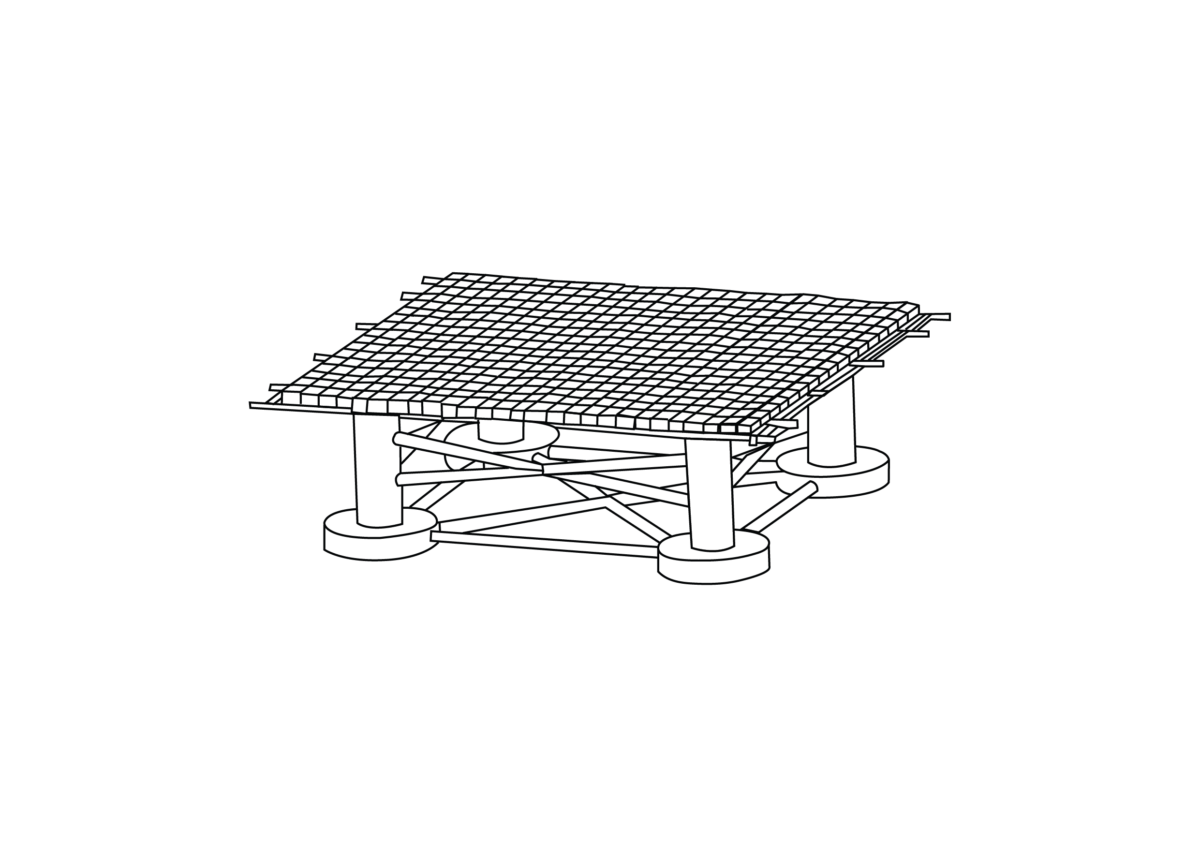Researchers from China and the United States have proposed a novel modular floating PV (FPV) solution to assess the behavior of offshore, multi-connected modules under combined wave-wind conditions. The team ─ which included scientists from Dalian University of Technology and the University of Maine ─ analyzed various types of fixed and hinged FPV systems to determine potential approaches to optimization.
“FPV is a complex multi-body system under the coupling action of wind, wave, current, and other multi-physical fields,” the study noted. “It is therefore of immense importance to develop robust engineering methodologies and models to design FPV systems applied to offshore environments.”
The analysis found that as the number of modules increases, motion responses become more pronounced, and the 2 x 2 platform experienced the most significant pitch response of the configurations studied. The team also observed that the additional movement generated by hinged connections resulted in “non-negligible” dynamic response for multi-body FPV systems, while systems using fixed connections showed no significant dynamic response. In addition, researchers observed that the mooring tension of systems with hinged connections was greater than that of systems with fixed connections.
For this study, the group introduced a novel modular design for FPV platforms that incorporated the concept of semi-submersible ocean engineering platforms. It used a catenary mooring system, which is based on a curve that has been commonly used in bridge, ship, and ocean platform moorings. An offshore site in China’s Shandong province was selected for the study, which used frequency-domain analysis and evaluated the overall hydrodynamic performance and behavioral characteristics of multiple types of FPV platforms.
The researchers created the FPV platforms using cylindrical pontoons and heave plates. They mounted solar panels with an inclination of 10 degrees onto steel trusses above the pontoons, with each steel truss providing at least 250 kW of power generation per platform. Motion responses under extreme conditions were examined for moored single, 2 x 2, and 3 x 3 FPV systems.
“The stability of FPV platforms is crucial in preventing the loss of power facilities caused by overturning and minimizes the damage to power transmission cables,” they said. “As a result, mooring design is critical to mitigate the dynamic response of FPV systems.”
The study emphasizes that heave response is influenced by the ratio of mass to stiffness. Researchers observed that the maximum pitch response for the 2 x 2 FPV systems is “obtained when the wave trough is just at the connection position of the two modules and the modules are V-shaped.” However, adding a third row of modules helped to reduce the relative movements, so that “the maximum pitch motion of the 3 x 3 platform” was less than the maximum of the 2 x 2 platform.
Based on their analysis, the team recommends an installation angle of at least 15 degrees for a multi-body FPV system, to reduce both motion and structural responses.
pv magazine print edition
The group’s findings are available in the study “Assessing the dynamic behavior of multiconnected offshore floating photovoltaic systems under combined wave-wind loads: A comprehensive numerical analysis,” published in Sustainable Horizons.
“Optimization of mooring systems could be conducted to further enhance the performance and reduce platform motion responses, such optimizations can lead to potential cost savings, making the overall system more economically viable,” they concluded.
This content is protected by copyright and may not be reused. If you want to cooperate with us and would like to reuse some of our content, please contact: editors@pv-magazine.com.




4 comments
By submitting this form you agree to pv magazine using your data for the purposes of publishing your comment.
Your personal data will only be disclosed or otherwise transmitted to third parties for the purposes of spam filtering or if this is necessary for technical maintenance of the website. Any other transfer to third parties will not take place unless this is justified on the basis of applicable data protection regulations or if pv magazine is legally obliged to do so.
You may revoke this consent at any time with effect for the future, in which case your personal data will be deleted immediately. Otherwise, your data will be deleted if pv magazine has processed your request or the purpose of data storage is fulfilled.
Further information on data privacy can be found in our Data Protection Policy.